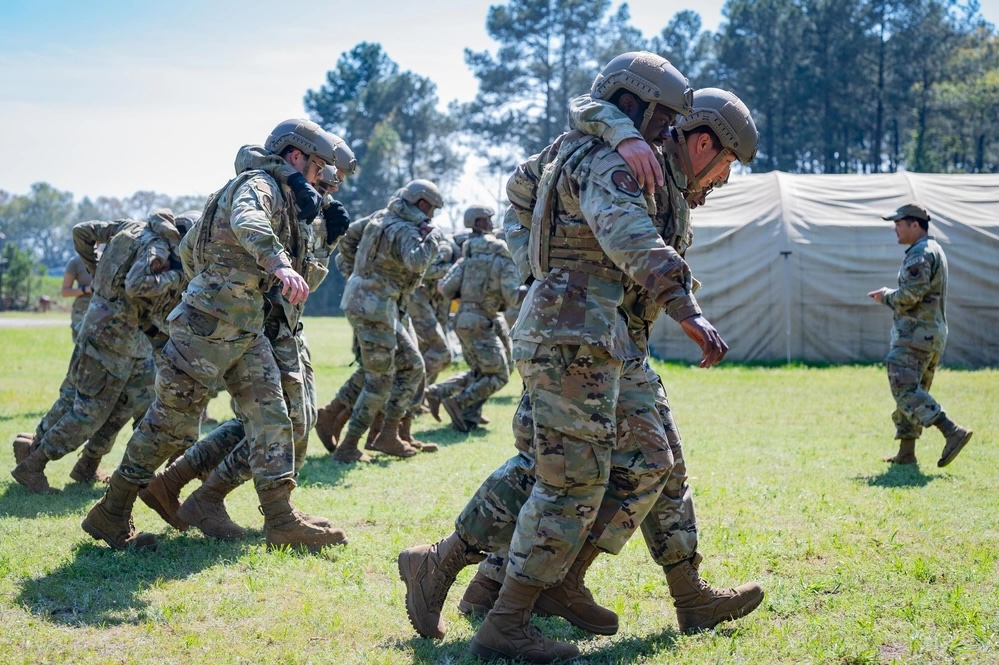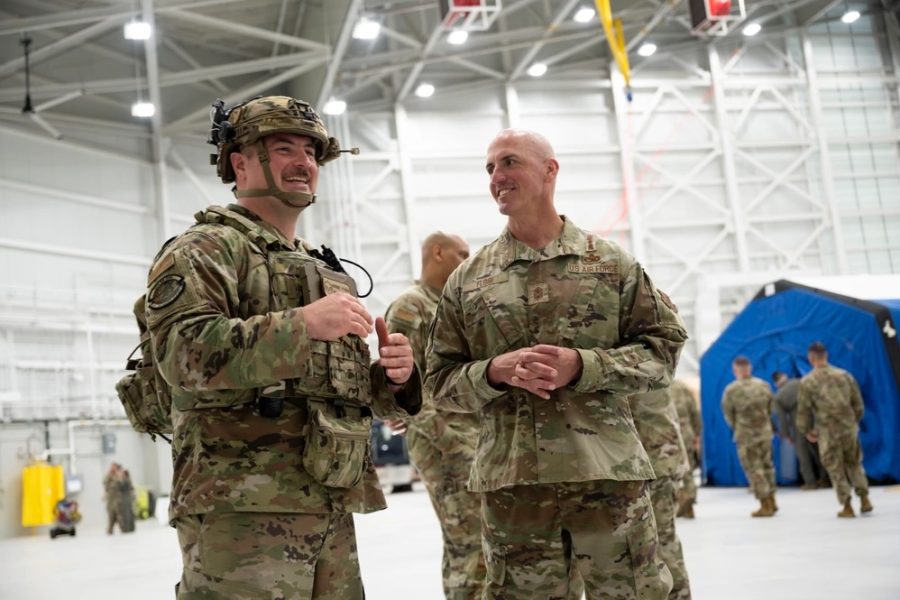It’s been a busy first 100 days for Chief Master Sergeant of the Air Force David A. Flosi, who earlier this year visited bases around the world with Air Force Chief of Staff Gen. David W. Allvin and Secretary Frank Kendall heralding a massive reorganization of the service in preparation for potential conflict with China or Russia.
Among other things, the reorg involves shifting to deployable combat wings, reorienting major commands, and replacing the ‘multi-capable Airmen’ concept with ‘mission-ready Airmen,’ a move meant to push Airmen to help accomplish a unit’s mission, rather than just pick up an unrelated series of tasks.
“I assess that all of our Airmen are multi-capable: in fact, I’ve yet to meet somebody that’s singularly capable,” Flosi told Air & Space Forces Magazine. “Mission-ready is very specific: it means you are assigned to a specific organization that is going to employ a certain airpower methodology in a contested environment and we need you to be ready to execute that mission.”
For example, if the mission is to deliver a certain weapon at a place and time using a certain platform such as a B-52, Airmen can work backwards to figure out what is needed to generate that mission.
“I can drill into that enough to tell you ‘here’s what I need to be ready to execute that mission,’ as opposed to ‘here’s the functions that must exist,’” Flosi explained.
Of course, B-52s have delivered weapons on targets for decades, so what makes the day-to-day work of a mission-ready Airman any different from that of earlier generations?
The exact answer varies based on the unit and mission, but Flosi pointed to the example of the past 20 years of the Global War on Terror, where individuals or small groups of Airmen from as many as 93 different bases filled up a deployment to the Middle East, where they usually enjoyed uncontested communications, logistics, and air defense. With such protection and efficiencies in place, Airmen could afford to stay in their “functional stovepipes,” Flosi said.
For example, a B-52 maintainer deployed to Qatar could wake up, brief, receive a work order, grab breakfast, wait until his part of turning the jet came up, complete his or her task, then step back off as the other specialists in electrical, avionics, hydraulics, or other systems completed their tasks on the jet.
That arrangement may not be possible in a conflict with China or Russia, where enemy disruptions could leave small groups of Airmen to accomplish missions on their own. That means tomorrow’s B-52 maintainer might have to guide a jet down the taxiway, make food, purify water, fix a light cart, defend the airfield, or a wide range of other tasks needed to get the mission done.
“We cannot put any more Airmen at risk than we absolutely must,” Flosi said, “which means we must pull all the capability out of every single Airmen that we put into harm’s way, and we have to un-constrain them from the functional stovepipes that we grow them in today.”

Also unlike past deployments, where Airmen spent a few weeks getting spun-up in-theater, tomorrow’s Airmen will have to hit the ground ready to perform missions in small groups, which means training for those missions together in-garrison.
“That’s the whole idea of this new unit of action training together and exercising together,” the CMSAF said. “It expands beyond just the maintenance functions to ‘what conditions must exist for us to execute this mission.’”
Feedback on the changes has so far been positive, because Airmen “very well understand the need to change our force presentation model,” Flosi said. But finding the resources to practice these concepts is a challenge. While wing commanders in the Indo-Pacific understand the need for change and are doing what they can to implement it, they are limited to their wing-level authorities and resources.
“The feedback we’re getting from the force is ‘go faster,’” he said. “But they require some resources in order to fully exercise this new model, this new unit of action, so we’re working very hard on that.”
There may be more news in the next few months as the Air Force starts to unveil a multi-service exercise called Return of Forces to the Pacific (REFORPAC) due to take place in the Indo-Pacific next year.
“Our Airmen are just thirsting for that type of capability,” Flosi said.
Becoming mission-ready may also require a cultural shift, one that makes Airmen feel the “sense of purpose that comes with being a valued member of a team,” he explained. “Honestly, that motivates performance far more than most other things that we will spend time on here at the Pentagon.”
Other leaders are also striving for a culture of purpose and empowerment through efforts such as Forging Warrior Hearts and Project Mercury. Some aspects of a ready force stem from quality-of-life issues such as housing, pay, and health care, Flosi said, while other parts come from the institution of the Air Force.
“My role as a senior enlisted leader is ensuring that our processes: the machine behind the human that promotes people, that incentivizes performance, and that assesses performance, is aligned with this idea of mission-ready Airmen and empowered, capable, mission command, that’s built off of trusted teams,” he said.
